
Neoclassical style in interior design is a modern interpretation of the noble traditions of antiquity
Neoclassical style in interior design is a design direction in which the techniques of antiquity and classical aesthetics are reinterpreted with the use of modern materials and design ideas. Neoclassical style in interior design skillfully combines conservative aristocracy with the functionality characteristic of the 20th and 21st centuries.
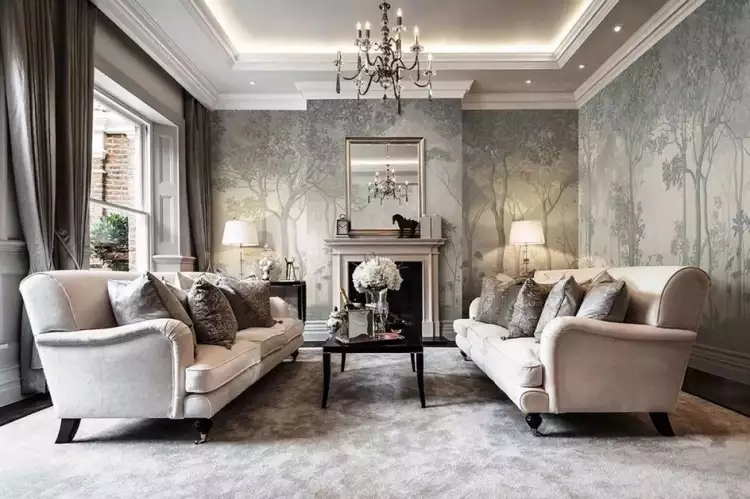 Neoclassical style in interior design. Neoclassical living room interior
Neoclassical style in interior design. Neoclassical living room interior
Neoclassical style in interior design is suitable for those who would like to embrace the best of traditional classics while abandoning excessive ornamentation in favor of comfort and efficiency. The flexibility of neoclassical design allows for the preservation of respectability and harmony while adapting to modern possibilities and the peculiarities of spaces. In particular, it appears lighter and is suitable for residential spaces with limited square footage.
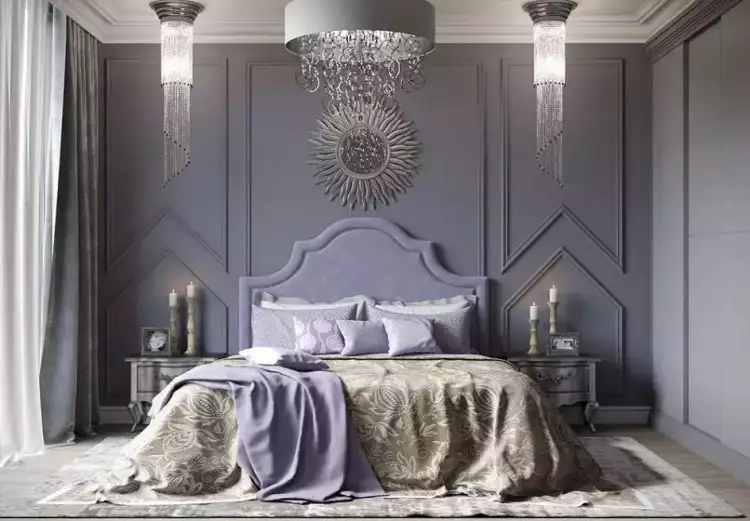 Neoclassical style in interior design. Neoclassical bedroom interior
Neoclassical style in interior design. Neoclassical bedroom interior
Key characteristics and features of neoclassical style in interior design
Neoclassical style in interior design can easily be adapted to various spaces: it is suitable for apartments in new buildings, rooms with high ceilings in old buildings, as well as wooden or stone cottages. Heavy elements of strict classical style are not mandatory in this style, yet it requires a certain amount of space.
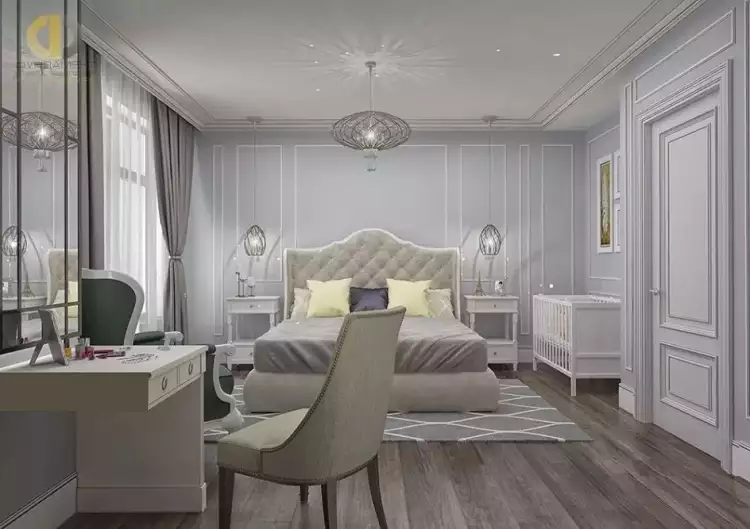 Neoclassical style in interior design. Neoclassical contemporary bedroom interior
Neoclassical style in interior design. Neoclassical contemporary bedroom interior
The main features of neoclassical style in interior design include:
- Symmetry and proportionality. Furniture and other elements are arranged according to simple linear schemes, following the rules of composition, creating an effect of harmony and rationality.
- Natural finishing materials or their imitation. Marble can be replaced with porcelain stoneware, and wood with textured laminate, but the stylization should be of high quality and authentic.
- Subdued color palette. The foundation is based on white, gray, and pastel colors. Complex, not overly vibrant shades such as terracotta, indigo, burgundy, mustard, or turquoise can be used for accents.
- Natural motifs. Alongside strict geometry and monochromatic finishes, subtle botanical ornaments are often present on wallpapers, curtains, or upholstery.
- Adequate and varied lighting. Natural light, luxurious chandeliers, symmetrically placed fixtures, and even concealed LED lighting all contribute to the brightness of the interior.
- Classic details. Beautifully adorned fireplace, columns and molding, arches, large mirrors, and paintings in carved frames create an atmosphere of aristocratic luxury.
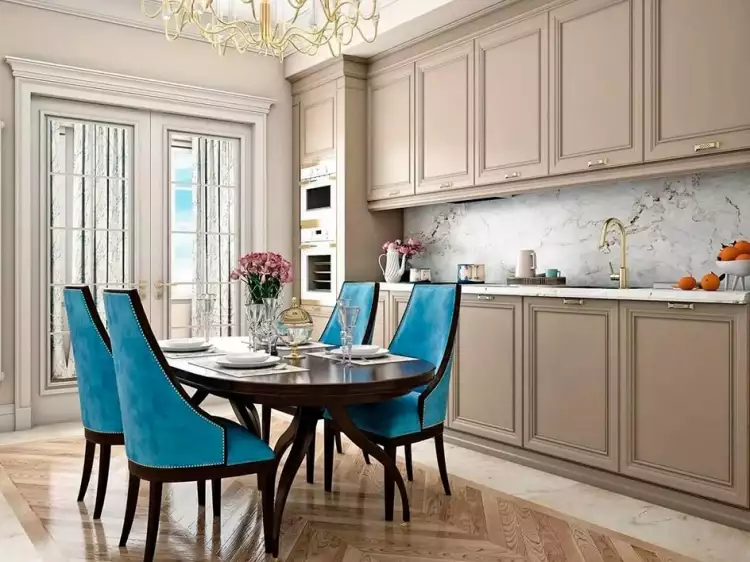 Neoclassical style in interior design. Neoclassical kitchen interior
Neoclassical style in interior design. Neoclassical kitchen interior
In contrast to strict classical style, neoclassical interiors usually have more "breathing space" - as if taking a step towards minimalism. It is advisable not to clutter the rooms with furniture, especially massive pieces. Walls are decorated in a way that leaves more free areas. Luxurious curtains with lambrequins, fringes, and tassels are allowed, but more often, neutral-colored curtains that don't draw excessive attention are preferred. Overall, the decor should look expensive, but without being ostentatious or excessive.
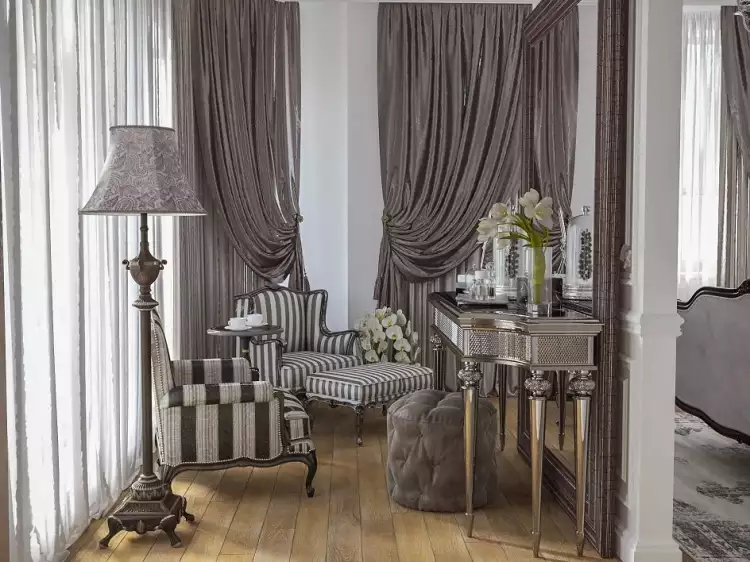 Neoclassical style in interior design. Neoclassical lounge interior
Neoclassical style in interior design. Neoclassical lounge interior
History of Neoclassical Style in Interior Design
The Neoclassical style in interior design emerged in the mid-18th century in Europe and later spread to the United States. Supporters of this movement aimed to move away from the ostentatious luxury of the Rococo style while preserving the elegance of Roman and Greek architecture, often drawing inspiration from the works of Andrea Palladio. In the late 18th and early 19th centuries, excavations of Pompeii were actively conducted, revealing numerous sculptures and frescoes. The discovery of ancient artworks contributed to the popularity of Neoclassicism, particularly in Italy and France. Gradually, this style began to overshadow the previously popular Romanticism.
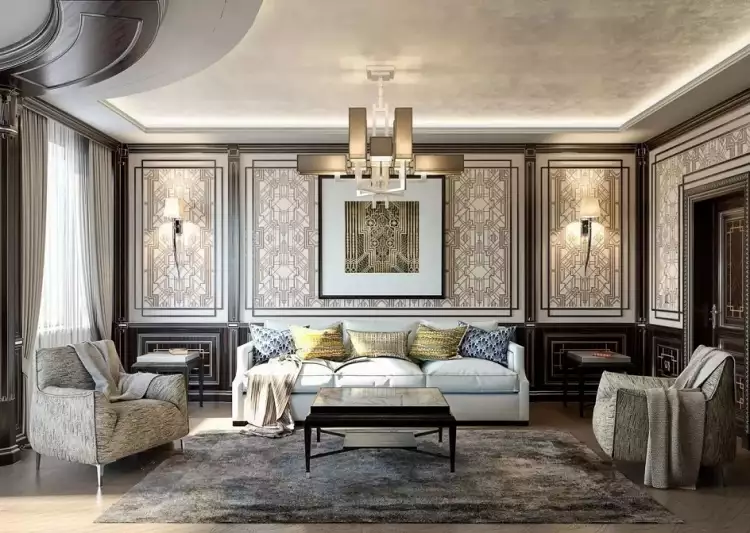 Neoclassical style in interior design. Neoclassical style lounge interior
Neoclassical style in interior design. Neoclassical style lounge interior
In the following years, Neoclassicism retained its influence. Its timeless aesthetic influenced many other design trends, while itself acquiring certain contemporary characteristics in each specific case, yet always remaining recognizable. Nowadays, the style remains popular, although it has been updated. It now represents a reinterpreted stylization of the original classics.
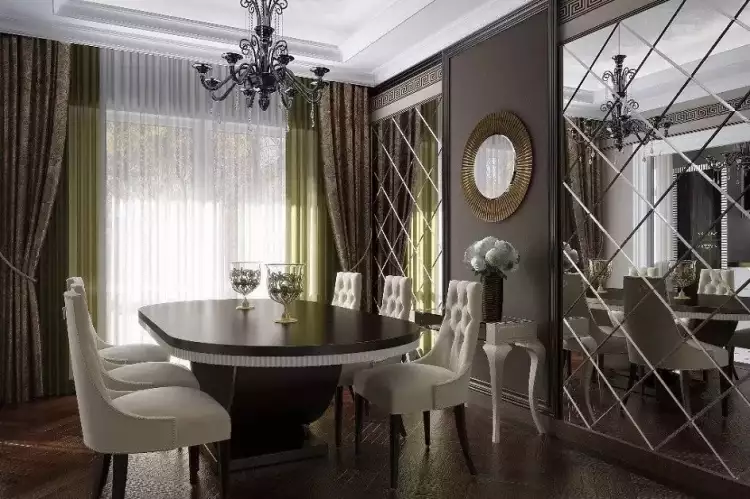 Neoclassical style in interior design. Neoclassical style dining room interior
Neoclassical style in interior design. Neoclassical style dining room interior
The Neoclassical style in interior design is not afraid of ever-changing trends. It has existed for over two and a half centuries and is unlikely to lose its relevance in the future, as it has embraced the best elements of classicism: noble forms, natural materials, subtle natural color palettes, and overall elegance. The flexibility in design solutions and a penchant for simplicity help adapt the style to typical apartments and other modern realities.
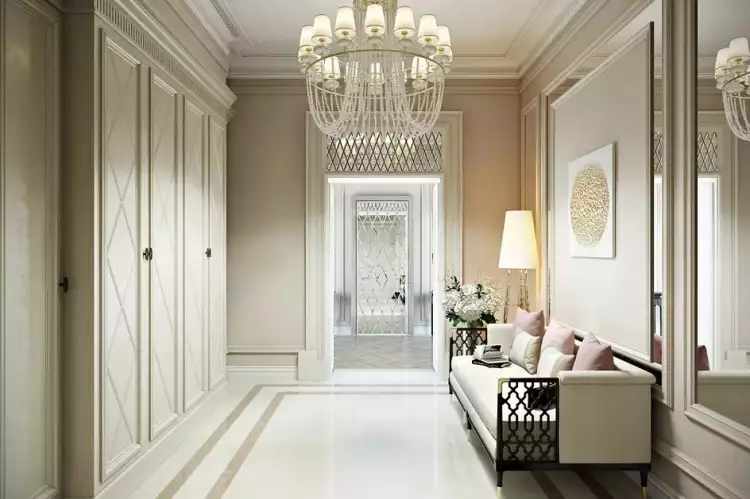 Neoclassical style in interior design. Neoclassical Entrance Hall
Neoclassical style in interior design. Neoclassical Entrance Hall
 Classicism: strict ideals of high style - characteristics, history, iconic classicists
Classicism: strict ideals of high style - characteristics, history, iconic classicists 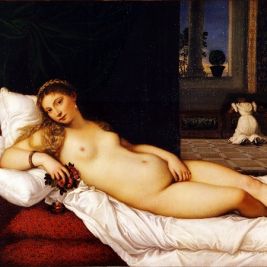 Genre of Nude in Painting: Evolution and Historical Trends of the Nude Style
Genre of Nude in Painting: Evolution and Historical Trends of the Nude Style  The top 10 most famous photographers in the world - the best photo artists of all time
The top 10 most famous photographers in the world - the best photo artists of all time 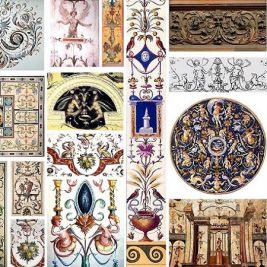 Grotesque is an eccentric art with harmless humor
Grotesque is an eccentric art with harmless humor  Auction: essence, types, history, the most famous art auctions
Auction: essence, types, history, the most famous art auctions  Birmingham silver - the beauty and elegance of small forms
Birmingham silver - the beauty and elegance of small forms 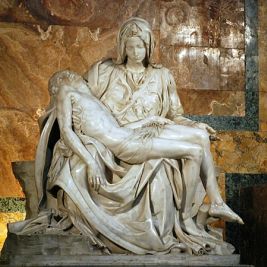 Sculpture "The Pietà" by Michelangelo Buonarroti is a iconic work in Catholicism
Sculpture "The Pietà" by Michelangelo Buonarroti is a iconic work in Catholicism 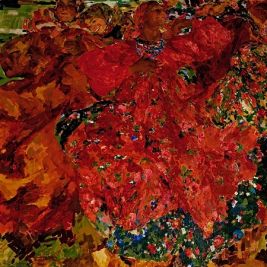 The painting " The Whirlwind" by Filipp Andreevich Malyavin is an inspiring hymn to the beauty and strength of character of Russian peasant women
The painting " The Whirlwind" by Filipp Andreevich Malyavin is an inspiring hymn to the beauty and strength of character of Russian peasant women  The painting "Menshikov in Berezovo" by Vasily Surikov is a dramatic depiction of the life of the disgraced prince
The painting "Menshikov in Berezovo" by Vasily Surikov is a dramatic depiction of the life of the disgraced prince 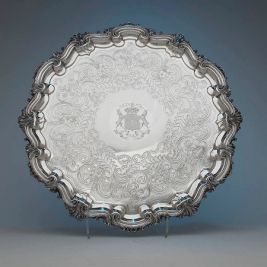 Sheffield silver - exquisite beauty, accessible to ordinary people
Sheffield silver - exquisite beauty, accessible to ordinary people